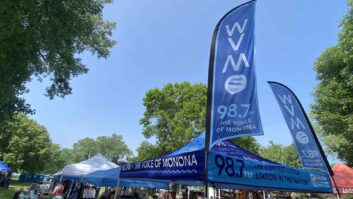
Steve Johnston. ‘There are thousands of people listening in Milwaukee, based on the comments I get.’ When Wisconsin Public Radio decided to implement HD Radio, the organization wanted it all: “Audio fidelity improvement for our AM stations, reduction of multipath distortion on our FM stations and the opportunity to add additional channels of programming,” says Director of Engineering and Operations Steve Johnston.
Since WPR began upgrading in 2006, beginning with flagship WHA(AM) in Madison and WLSU(FM) in La Crosse, the organization has added the capability to two AM and 11 FM stations of its 30-station group.
“I am very pleased with our ability to use our existing spectrum to deliver such an improvement to our listeners,” Johnston reports. He said all three of the above-mentioned HD-Radio goals have been achieved.
For years WPR has been providing the Ideas Network, with its talk programming, and the NPR News & Classical Network. HD Radio has provided WPR the ability to add its own HD2 Classical Service.
HD Radio has made a big difference for WPR in Wisconsin’s largest city, Milwaukee. “We’ve never been able to get more than one station in Milwaukee. Adding HD to that station allows us to bring another service there to the multicast channel, and that’s a big deal. There are thousands of people listening [to the HD Radio service] in Milwaukee, based on the comments I get.”
He said that WPR has been a bit frustrated with the “unreliable nature of some of our HD exciters, importers and exporters.” He said most of the hassles with gear are related to the use of PCs as the foundation of the system. “We are really looking forward to the introduction of dedicated hardware for HD generation.”
He does see a difference in performance between AM and FM signals: “The digital coverage of our AM stations is roughly equivalent to the noise-free analog area, but the FM digital signals do not cover as well. This is especially true on some of our talk stations, which we run in analog mono most of the time.”
Johnston supports experimentation with an increase of FM power. “My seat-of-the-pants impression is that the industry will be able to increase digital power to some degree, perhaps to 4 or 5 percent, but not all the way to 10 percent, without serious interference to our own analog signals on many radios. Perhaps the final choice can be made a licensee decision, and each station can select the level that fits their needs best, based upon published test results.”
He said WPR has found that it takes listener education for new HD Radio owners to understand the peculiarities of receiving the digital signals. “We do run into listeners who say: ‘We can hear that regular analog station, why can’t I get that digital?’ It takes a little more effort, a little more playing around with the antenna and things.” WPR maintains a help line to help those listeners.

Johnston at the WHA tower site But Johnston said the number-one weakness of HD Radio is marketing of receivers, which he describes as almost nil. Part of the problem he described is that by naming the new technology HD Radio, it gets buried under the onslaught of HDTV information. But he also blames electronics stores, where “there’s a total lack of education of sales people and the lack of stocking HD Radios.”
Still, WPR’s efforts are gaining traction in Wisconsin. Johnston said he’s found that having competitor stations offering HD Radio is a plus. “If we’re not the only game in town, if there are commercial stations also adopting HD, then we do better. It seems like people are more willing to buy an HD Radio if they’re able to get more than one HD station on it.”
Johnston said it comes as no surprise to anyone who knows WPR’s history that it would be a pioneer in HD Radio. WHA went on the air in 1917, broadcasting weather forecasts and farm reports. Wisconsin’s public radio network also pioneered broadcasting in FM with its FM network. Today WPR is a partnership of the Educational Communications Board and the University of Wisconsin.
— Craig Johnston







